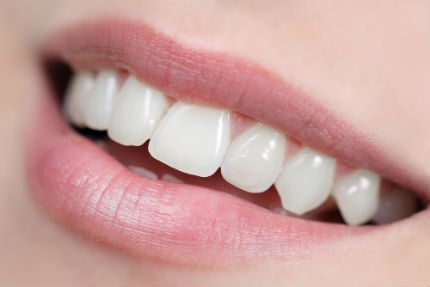Researchers have developed a new way to regenerate dental enamel
07/31/2018 / By Edsel Cook

Dentists may soon be able to restore the enamel that our teeth have lost from constant wear and tear. In an article in Science Daily, British researchers announced a method that can regenerate hard tissues such as dental enamel.
Enamel covers the outer part of our teeth. It is the toughest tissue in the human body. Thanks to this complex material, our teeth can withstand every bite we take and endure the effects of acidic, cold, or hot food and drinks.
While enamel is tough and lasts for many years, it cannot be regrown. The loss of enamel will often result in pain and the loss of the unprotected tooth.
Dental problems related to the loss of enamel affect more than half of the people in the world. A team from the Queen Mary University of London (QMUL) is one of the many research groups that were looking for a way to recreate the important tissue. (Related: Prevent tooth decay with this native plant from Papua, known as sarang semut.)
Once-irreplaceable dental enamel may soon be able to regenerate
In their study, the QMUL researchers devised a way to organize mineral materials into more or less the same precise structure found in dental enamel. They believe their technique can help prevent and treat dental complications such as tooth decay and tooth sensitivity.
“This is exciting because the simplicity and versatility of the mineralisation platform opens up opportunities to treat and regenerate dental tissues,” said dentist Sherif Elsharkawy, a researcher from QMUL’s School of Engineering and Materials Science who served as the first author of the study. “For example, we could develop acid resistant bandages that can infiltrate, mineralize, and shield exposed dentinal tubules of human teeth for the treatment of dentin hypersensitivity.”
The technique created by her team replicated the growth process of apatite nanocrystals when the human body was producing dental enamel. They used a certain protein material that encouraged the growth of the tiny crystals. They made sure they were organized in a structure that possessed the same physical properties of naturally-formed enamel.
Professor Alvaro Mata of the QMUL served as the lead author of the study. He explained that materials science studied how nature arranged molecules in a very precise manner. Researchers would then replicate the natural process and arrangement to reproduce those valuable materials.
New technique could restore hard tissue like dentin and bone
Mata, Elsharkawy, and their teammates leveraged disordered proteins to direct and manage the mineralization process of apatite material at different levels down to the nano-scale. Disordered proteins do not have a fixed or ordered structure; amelogenin, for example, plays a big role in guiding apatite crystal growth during enamel formation.
The researchers reported success in growing the synthetic equivalent of dental enamel. The new enamel could be produced on the surfaces of other tissues like the calcified material that make up teeth, even if the surfaces are highly uneven. The process is also reportedly simple and versatile.
The QMUL team’s newfound ability to control the mineralization process of a material can potentially be expanded to other types of hard tissue. For example, it might be possible to create synthetic dentin, which is another tissue that comprises teeth alongside enamel. It could also help bone regeneration in patients who have bone-related disorders.
Finally, their study also showed how protein disorder could affect the human body and the development of diseases, given how these disorganized proteins can be arranged in certain ways to produce important tissues like enamel.
Visit Dentistry.news to learn about new ways to repair or regrow worn-out enamel.
Sources include:
Tagged Under: dentistry, enamel loss, enamel regeneration, future tech, hard tissues, medical science, nanocrystals, regeneration, teeth, tissue regeneration, tooth enamel




















